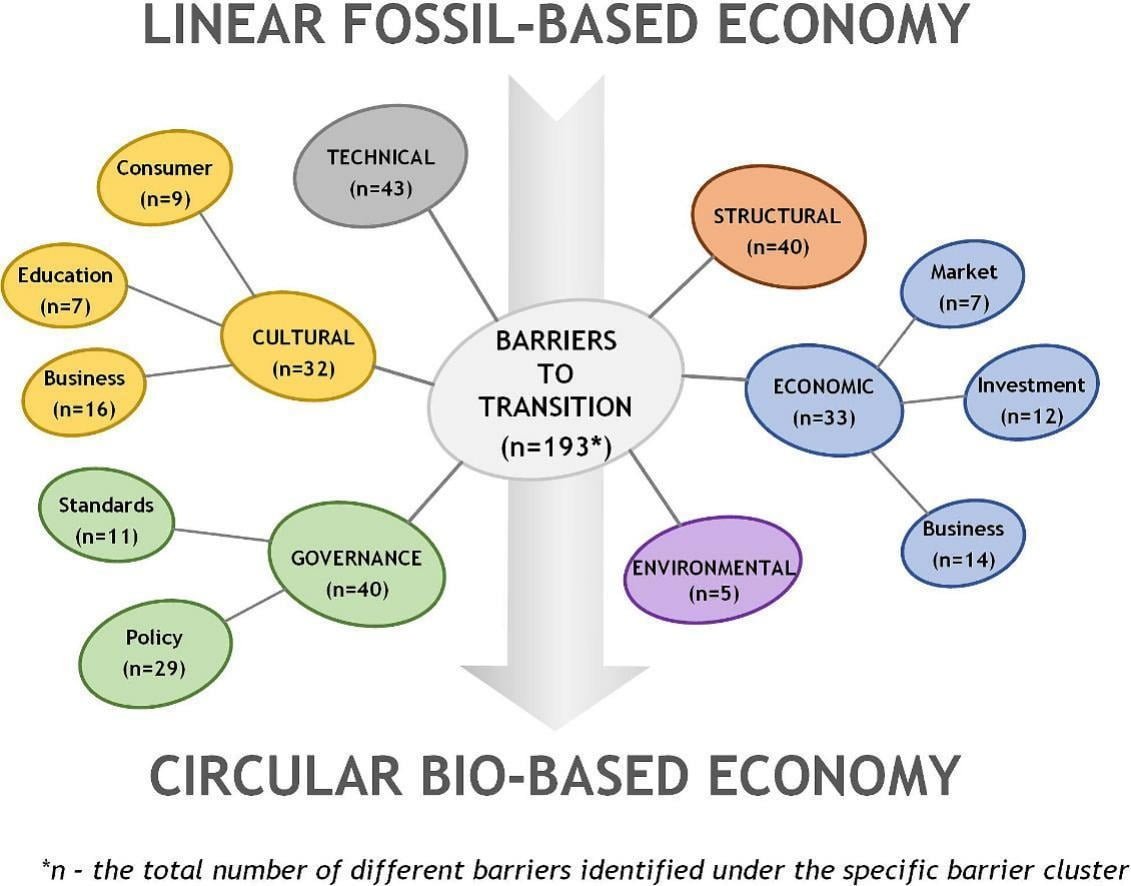"Barriers to transitioning to a circular bio-based economy: Findings from an industrial perspective"
We’re excited to share SUSTRACK first publication: the first paper stemming from SUSTRACK project was published in Sustainable Production and Consumpion, thanks to the great effort and collaboration of many partners, namely UnitelmaSapienza, Tecnalia, University of Ferrara and Bundesanstalt für Materialforschung und -prüfung (BAM).
The transition from a linear fossil-based to a circular bio-based economy represents an opportunity and a suitable pathway for achieving several sustainable development goals. However, the transition is a complex process since it requires transformative policies, purposeful innovation, access to finance, risk-taking capacity as well as new and sustainable business models and markets. Accordingly, the first step in this transition process is the identification of barriers that are hampering the transition to a sustainable circular bio-based economy. With this motivation in mind, SUSTRACK first publication reviews grey literature to identify barriers focusing on four critical sectors facing major challenges within the current linear economy and requiring a sustainable transition most urgently: construction, chemicals, plastics, and textile sectors.
Employing an adapted STEEP methodology (Social, Technological, Economical, Environmental, Political), a total of 193 different barriers have been identified and clustered under six categories: cultural, technical, economic, environmental, governance, and structural.
Regardless of the sector, cultural and structural barriers are identified as the most prominent; the lack of incentives for consumer behaviour change and lack of stakeholder collaboration were the most cited barriers among the literature records. From a value chain perspective, most of the barriers are related to the material processing and product manufacturing stage. Finally, potential solutions, extracted from the grey literature, are proposed to fill the gaps and overcome the identified barriers. Many of the identified barriers are common across the four investigated sectors, indicating the solutions or measures can be applicable in a wider perspective to promote the transition in the right direction.
Read the full publication here!




